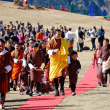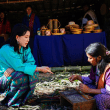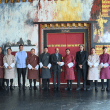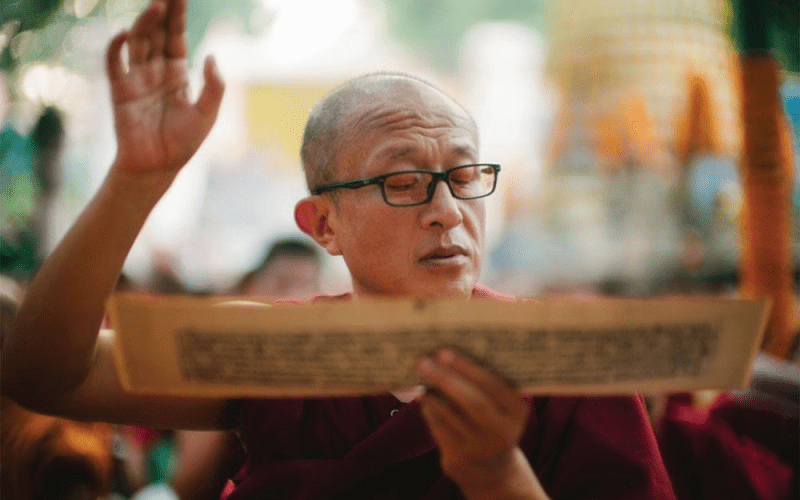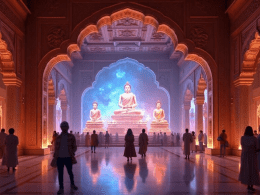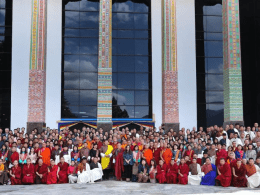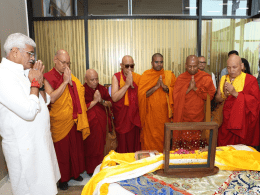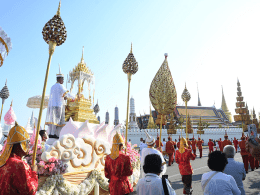In a world accelerating toward digital saturation, with artificial intelligence rewriting norms and social media redefining attention spans, what remains of ancient wisdom traditions like Buddhism? Rinpoche, in a compelling conversation with Needrup Zangpo, explores the tension—and potential harmony—between timeless truths and modern technologies. His reflections are at once grounded in the core of the Buddhist path and acutely attuned to the realities of our time.
The Double-Edged Sword of Artificial Intelligence
Rinpoche is candid: “I know nothing about artificial intelligence.” But this admission is not one of retreat—it’s an opening to curiosity. Recognising that AI, like every tool before it, is neither inherently harmful nor helpful, he stresses the importance of intent. If wielded mindfully, AI can serve as a bridge between ancient wisdom and contemporary understanding. As an example, he imagines AI assisting in translating complex sutras—like the Vajracchedika (Diamond Sutra)—into language that a 16-year-old can grasp.
Yet, Rinpoche is clear that Buddhism’s spiritual pursuit isn’t about clinging to any particular form—technological, philosophical, or political. “It’s all about seeing the truth,” he says. And that truth—impermanence, selflessness, and uncertainty—remains unchanged regardless of the medium through which it is pursued. In this way, AI is neither salvation nor sabotage, but simply another mirror held up to our minds.
Tradition: A Comfort Zone or a Cage?
When asked about the survival of traditional media in the face of rapid social media expansion, Rinpoche offers a radical reframe: even today’s cutting-edge tech will soon become tomorrow’s tradition. In this context, “tradition” is less a lineage than a label—often used to provide comfort and identity in an otherwise uncertain existence.
He notes that while some traditional media like film might seem under threat, they are continuously evolving. What matters is not the format but the intention: communication. Artists, he says, are engaged in a perpetual balancing act—conveying their inner vision while remaining sensitive to the ever-changing audiences they seek to reach. In this, tradition and innovation are not opposites but partners in dialogue.
A “Normal” Film with a Universal Message
Rinpoche’s next cinematic project, still in development, signals a shift. “This time I am making something that I’d call more ‘normal,’” he shares, noting that reaching wider audiences sometimes means presenting ideas in more accessible, even conventional, ways. Beauty might sometimes take precedence over radical originality, but even beauty, he admits, is subjective.
This evolution reflects a broader lesson in communication and compromise: how to honour one’s vision while remaining in service to others. Especially in resource-constrained contexts like Bhutan, storytelling must balance inspiration with sustainability. The art of filmmaking, then, becomes another form of mindfulness—an engagement with the world that requires clarity, empathy, and adaptability.
Mindfulness in the TikTok Era
Perhaps the most urgent question Rinpoche addresses is how to teach mindfulness to a generation shaped by TikTok and constant scrolling. The answer, paradoxically, is to avoid romanticizing stillness or silence. “The pure Buddhist sense of mindfulness is all about being mindful of the truth,” he asserts. It’s not about posture or ambiance—it’s about seeing reality as it is: transient, uncertain, ungraspable.
Surprisingly, he is open to the idea that even TikTok can be a path to mindfulness—if it helps us understand impermanence, bias, and our own projections. By contrast, he warns against “spiritual materialism,” where ritual and conduct mask a lack of genuine insight.
In a media-saturated world, the key isn’t abstinence but discernment. “Don’t let algorithms beat you,” he warns, urging a mindful pluralism—consuming diverse sources, recognising one’s own biases, and seeing every opinion (including our own) as just that: an opinion.
A Brave Vision for the Future
In closing, Rinpoche reflects on His Majesty the King’s vision for Gelephu Mindfulness City—a bold initiative to create a space where inner well-being and outer development go hand in hand. He calls the idea “brave and bold,” a vision he hopes will not only take root in Bhutan but serve as a model for the world.
A Clear Seeing in a Clouded World
Rinpoche’s words are a reminder that mindfulness is not about retreating from the world but engaging with it—critically, compassionately, and courageously. In the face of AI, TikTok, or whatever comes next, the practice of seeing clearly, and living with awareness, remains not just relevant but essential. The medium may shift; the message endures.
